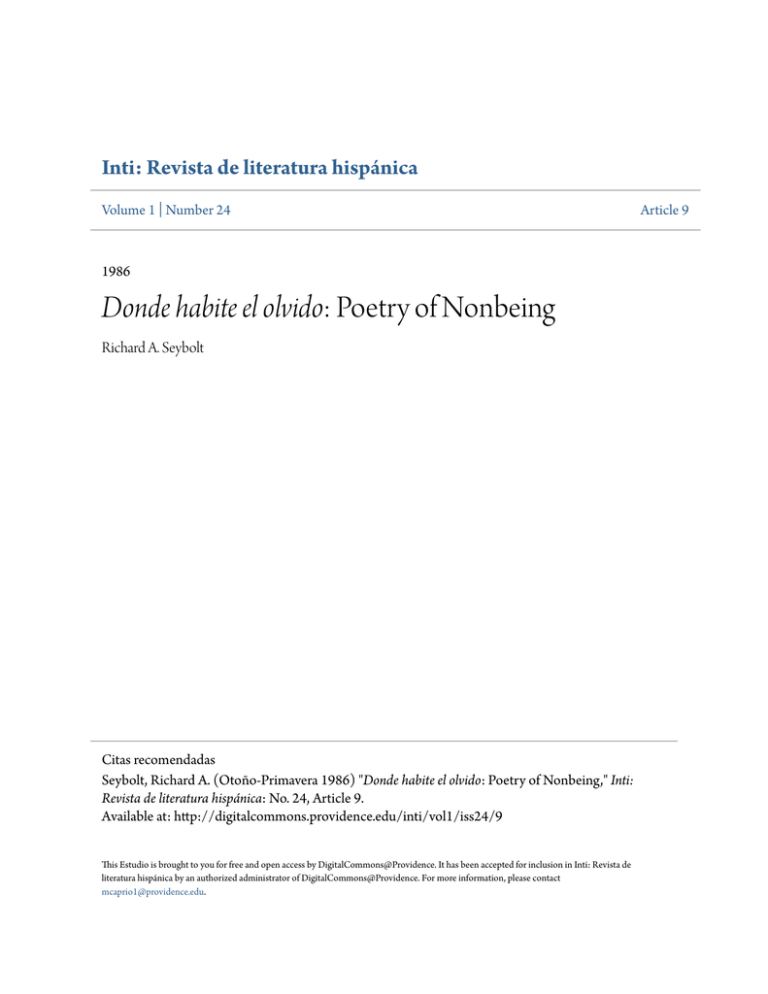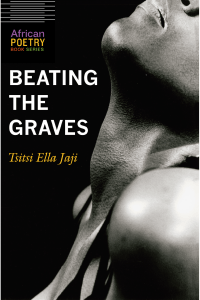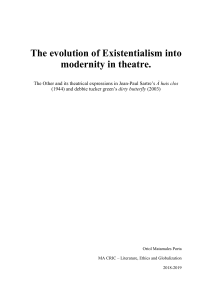Donde habite el olvido: Poetry of Nonbeing
Anuncio

Inti: Revista de literatura hispánica Volume 1 | Number 24 1986 Donde habite el olvido: Poetry of Nonbeing Richard A. Seybolt Citas recomendadas Seybolt, Richard A. (Otoño-Primavera 1986) "Donde habite el olvido: Poetry of Nonbeing," Inti: Revista de literatura hispánica: No. 24, Article 9. Available at: http://digitalcommons.providence.edu/inti/vol1/iss24/9 This Estudio is brought to you for free and open access by DigitalCommons@Providence. It has been accepted for inclusion in Inti: Revista de literatura hispánica by an authorized administrator of DigitalCommons@Providence. For more information, please contact [email protected]. Article 9 DONDE HABITE EL OLVIDO: POETRY OF NONBEING Richard A. S e y b o l t University of Minnesota at Duiuth Luis Cernuda's Donde habite el olvido (1934) is poetry of failure, for it without doubt r e p r e s e n t s the nadir of his career with regard to achieving his poetic ideal: the regaining of a lost innocence wherein reality and desire were one. The vehicle of desire's experiencing the world a s eternal present is eros, and its s u c c e s s e s are ephemeral at best: el deseo que provoca el amor, la exigencia, dolorosa a fuerza de intensidad, de salir de mí mismo, anegándome en aquel vasto cuerpo de la creación. Y lo que hacía aún más agónico aquel deseo era el reconocimiento tácito de su imposible satisfacción,1 We learn from "Historial d e un libro" that this work a p p e a r e d directly after a sordid homosexual affair, and Cernuda himself s e e m e d e m b a r r a s s e d at least by the episode that g a v e rise to it: y su relectura me produce rubor y humillación.2 It is a work of alienation, estrangement, and despair in which the breach between reality and desire is greatest. Total disillusionment, nulled despair, a violently destructive experience-, cold despair, and painful nostalgia are a few of the terms employed by Derek Harris to describe the work in Luis Cernuda: A Study of the Poetry,3 Nevertheless, the p o e m s d e m o n s t r a t e a restraint and economy of expression reminiscent of Bócquer (the title itself c o m e s from Rima LXVI). 128 INTI No 24-25 One of the predominant s e n s a t i o n s that t h e s e p o e m s communicate is that of emptiness. The poet's existence often is expressed in terms of the void, of nothingness. At times he s e e m s to desire a type of nonbeing wherein all sensation c e a s e s . Several of the p o e m s s u g g e s t existential dread, for meaning is given to e x i s t e n c e by a w a r e n e s s of its very extinction. Various critics have noted the existential significance of C e r n u d a ' s poetry to a greater or lesser degree. Maria Dolores Arena points out that the poet's heroic attitude of affirming life in the f a c e of death coincides with the existential philosophy of Martin H e i d e g g e r . 4 R. A. Caldwell remarks that Cernuda's concern, to save what is lasting and essential from the certain wreckage of temporal existence is merged into the modern tradition of phenomenology and existentialism within which the ontologies of Unamuno and Machado grew up.5 And Alexander Coleman s p e a k s of the poet's p e r m a n e n t o t h e r n e s s and refers to his attempts to stem the flow toward nonbeing. 6 Examining briefly a few of J e a n Paul Sartre's ideas concerning ontology a s they a p p e a r in L'Etre et le néant should be helpful in gaining a fuller understanding of Donde habite el olvido. According to Sartre existence p r e c e d e s e s s e n c e , which m e a n s that man belongs to no divine s c h e m e of things but rather s h o w s up on the s c e n e by mere c h a n c e . He is not fabricated a s an object that is first thought and then created. For man there really is no a priori whatsoever. B e c a u s e he is alone in the world, man must make choices; he is doomed to be free, and this is his burden. Human life is free and undetermined, but man n e e d s to categorize and place everything in its proper place. His failure to do this c r e a t e s the sensation of the absurd. In order to avoid this man will attempt to deny his freedom of choice. Sartre calls this bad faith (mauvaise foi). He distinguishes two principal types of being a s being-for-itself (pour soi), and being-in-itself (en soi). Conscious beings are being-for-themselves, and the being of things is being-in-itself. Between c o n s c i o u s n e s s and its objects there is a g a p , which is n o t h i n g n e s s . T h e r e f o r e , being-for-themselves are responsible for bringing nothingness into the world. Being-in-themselves are incapable of any relationship. However, man strives to have a pure, concrete, and solid existence such a s the objects of his c o n s c i o u s n e s s possess. He, of c o u r s e , d e s i r e s this thingness without losing his consciousness, a desire reminiscent of the Unamunian conflict of serse vs serlo todo. An example is the waiter who adopts the language and gestures that waiters supposedly p o s s e s s , realizing fully that there is a g a p between his "real self" and the waiter. He attempts to incorporate being-in-itself (waiter), but there is an abyss, a feeling of void created by the failure. The inherent f r e e d o m of c o n s c i o u s n e s s and the inability to incorporate itself into the world create the sensation of anguish and nothing. It should RICHARD A. SEYBOLT 129 b e noted that during this effort of c o n s c i o u s n e s s to achieve reification, it simultaneously contemplates itself a s a thing, for it c r e a t e s a sort of hole in its being. Man is freedom, and his project is to choose; but freedom is annihilation, for it d e s t r o y s its own being. Sartre c o m e s to s o m e interesting conclusions concerning man's existence by considering other conscious beings. Due to the Other man feels shame, self-awareness, guilt, and pride. My being observed by others forces me to realize that I am an object for t h e m . Being reified by the Other d e p r i v e s me of the transcendence that is so important to me: By the mere appearance of the Other, I am put in the position of passing judgment on myself as an object, for it is as an object that I appear to the Other.7 And yet, the Other is necessary if man is to realize all the structures of his being. 8 In an epigraph at the beginning of Donde habite el olvido Cernuda states that the book is el recuerdo de un olvido. Pedro Salinas m a k e s s o m e pertinent comments on this paradoxical phrase and on the work a s a whole: Es decir, puede existir, por paradójico que esto sea, lógicamente, una memoria del olvido. El poeta, al contar desde su más íntimo fondo el olvido, acaso crea así un recuerdo.... Creación allí donde el mismo poeta había afirmado la nada, donde nada parecía existir.9 In a s e n s e Donde habite el olvido may be considered a series of meditations on the nature of nonbeing. Many of the p o e m s deal not merely with nothing in the ordinary s e n s e , but with the quiddity of nothingness. The first poem's title is the s a m e a s that of the book: Donde habite el olvido En los vastos jardines sin aurora; Donde yo sólo s e a Memoria de una piedra sepultada entre ortigas Sobre la cual el viento e s c a p a a sus insomnios. Donde mi nombre deje Al cuerpo que designa en brazos de los siglos, Donde el d e s e o no exista. En e s a gran región donde el amor, ángel terrible, No esconda como acero En mi pecho su ala, Sonriendo lleno de gracia a é r e a mientras crece el tormento. Allá donde termine e s t e afán que exige un dueño a imagen suya, Sometiendo a otra vida su vida, Sin m á s horizonte que otros ojos frente a frente. INTI No 24-25 130 Donde penas y dichas no sean m á s que nombres, Cielo y tierra nativos en torno de un recuerdo; Donde al fin quede libre sin saberlo yo mismo, Disuelto en niebla, ausencia, Ausencia leve como carne de niño. Allá, allá lejos; Donde habite el olvido. 10 The poem is a series of adverbial c l a u s e s that constitute a chain of incomplete s e n t e n c e s . There is a s e n s e of emptiness a s the reader is left alone waiting for the independent c l a u s e s that never appear. The poet h a s s u f f e r e d love's torment and now w i s h e s to abolish his own self in nothingness, oblivion's realm, in order to avoid all sensation. Donde yo sólo sea / Memoria de una piedra sepultada entre ortigas suggests that the pour soi desires to abandon itself in the en soi of thingness (piedra), but not in order to gain any substantiality or eternity; rather, it wishes to annihilate consciousness, a s it only produces pain and torment for the poet. The poet in his effort to dissolve himself into nothingness s e e k s to destroy the relationship of sign and referent: Donde mi nombre deje / Al cuerpo... / Donde penas y dichas no sean más que nombres. If the poet's body and feelings could be mere names, then they would be insentient shells detached from their respective real objects. In the fourth s t a n z a reference is made to the Other which w a s the lover who along with the poet w a s responsible for this d i s a s t r o u s a m o r o u s relationship and its concomitant s h a m e . Sartre s a y s that o n e can, when confronted by the Other, adopt either an attitude of submission to or of dominance over it. However, he also s t a t e s that either choice involves failure. In any event, the poet merely wishes to s u p p r e s s the desire in order to avoid suffering. At the end of the fifth stanza he refers again to the state of nonbeing he wishes to attain. Upon achieving it there will be no knowledge of it (sin saberlo yo mismo), b e c a u s e c o n s c i o u s n e s s will have been obliterated. He will be dissolved into mist and pure a b s e n c e . Curiously, however, Cernuda e n d s the stanza with a slightly erotic simile: Ausencia leve como carne de niño. From an ontological perspective the poem can be s e e n a s the poet's desire to annihilate his very being in an attempt to gain a state of nonbeing wherein all suffering will c e a s e to exist. It is a world of a b s e n c e s but a world nonetheless; and although the poet d o e s not heroically face reality with an a w a r e n e s s of life's intrinsic absurdity, neither d o e s he c h o o s e suicide or simply to avoid the problem of existence (mauvaise foi). RICHARD A. SEYBOLT 131 Poem III, "Esperé un dios en mis días," is m a d e up of three quatrains and a couplet. In the first quatrain the poet tells of how love destroyed his desire, and in the second two describes his present situation: Esperé un dios en mis días Para crear mi vida a su imagen, Mas el amor, como un agua Arrastra a f a n e s al paso. Me he olvidado a mí mismo en sus ondas; Vacío el cuerpo, doy contra las luces; Vivo y no vivo, muerto y no muerto; Ni tierra ni cielo, ni cuerpo ni espíritu. Soy eco de algo; Lo estrechan mis brazos siendo aire, Lo miran mis ojos siendo sombra, Lo besan mis labios siendo sueño. He amado, ya no amo más; He reído, tampoco rio (pp. 88-89). Here the poet exists in an ontological limbo; he is neither alive nor dead, neither earth nor sky, neither body nor spirit. He is neither pour soi nor en soi, and Sartre s a y s that when c o n s c i o u s n e s s is unable to incorporate en soi the sensation of n a u s e a arises. The poet is existentially alienated; for he is, a s he s t a t e s in the first verse of the third stanza, an eco de algo. This image s u g g e s t s an emptiness that represents the e s s e n c e of his being. An echo is heard at a distance and lacks s u b s t a n c e , for it is merely the name of a thing in the process of fading into nothingness. He cannot even specify of what he is an echo thus intensifying the nullity of his existence. Nor do air, shadow, and dream constitute his e s s e n c e ; and any attempt to know it by m e a n s of his arms, e y e s or lips, will necessarily fail. Poem V e x p r e s s e s the poet's desire to die, and at the end of the first stanza he states that he hopes to be hecho aire que pasa y no sabe (p. 90). In this instance air is insubstantiality itself and h e n c e cannot be related to en soi, for c o n c r e t e n e s s pertains to the latter, and here we h a v e its a b s e n c e . No sabe m e a n s no c o n s c i o u s n e s s or being. The three lines describe in somewhat more detail this state of nonbeing: A vivir sin mi mismo de un deseo, / Sin despertar, sin acordarme / Allá en la luna perdido entre su frío (p. 90). Again the poet's self is disintegrated, and somehow he exists without himself. In other words the destructive experience of a failed love h a s destroyed his true self, and he now desires a nonexistence which he will neither r e m e m b e r nor from which will a w a k e n . Perhaps "metanihilistic" might s e r v e to describe this ontological realm, for it is a state of nonbeing that somehow exists beyond extinction. The last verse with reference to the moon is reminiscent of the poetry of Bécquer a s well INTI No 24-25 132 a s of the early poetry of J u a n Ramón Jiménez, with its languid, romantic sentimentality. "Era un sueño, aire" is a brief poem that combines a series of disparate elements in order to create a s e n s e of loss and disintegration: Era un sueño, aire Tranquilo en la nada; Al abrir los ojos Las ramas perdían Exhalaba el tiempo Luces vegetales, Amores caldos, Tristezas sin dónde. Volvía sombra; Agua eran s u s labios. Cristal, s o l e d a d e s , La frente, la lámpara. Pasión sin figura, Pena sin historia; Como herida al pecho, Un beso, el deseo. No sabes, no s a b e s (pp. 92-93). Unlike the previous poem nearly all emotion is a b s e n t here, and we are presented a dispassionate description of a world which is a reflection of the poet's present emotive state (the objective correlative of which C e r n u d a s p e a k s in his commentaries). It is a poem of a b s e n c e s . There is no object of the verb perdían in verse 4, for example. Tristezas sin dónde, Pasión sin figura, and Pena sin historia, intensify the sensation of incompleteness. Agua eran sus labios s u g g e s t s a lack of any concrete form in the world. All is a b s e n c e , v a g u e n e s s , and nullity. With the last two lines of the third s t a n z a we h a v e four isolated e l e m e n t s that at first a p p e a r to be correlatives of previous objects. However, they have no logical referent and consequently simply stand alone helping to c r e a t e a s e n s a t i o n of forlornness. Only the last two lines in the fourth quatrain s u g g e s t the passionate episode that gave rise to this world of the void. With No sabes, no sabes, it is evident that the poem d o e s not p o s s e s s an altogether logical explanation, but is rather the expression of Cernuda's own numb despair which arose a s a c o n s e q u e n c e of his failed love. This poem along with No.l, is p e r h a p s one of Cernuda's finest achievements in capturing the world of nonbeing wherein nearly all concrete elements of reality are absent despite the fact that it is precisely those objects ( r a m a , labios, etc.) that help to c r e a t e ontological nullity — the p o e m ' s t h e m e . Considered from an RICHARD A. SEYBOLT 133 ontological perspective, the much noted ethereal or incorporeal quality of Cernuda's poetry a s s u m e s a new and important dimension. In Poem XII, "No quiero, triste espíritu, volver" the poet claims that he h a s no desire to return to love even if there may have been a moment of happiness. The rest w a s torment, and in the fourth and final s t a n z a he s t a t e s : No, no quisiera volver, / Sino morir aún más, / Arrancar una sombra, / Olvidar un olvido (p. 94). Again Cernuda e x p r e s s e s a desire for an existence that is beyond death, an extinction s o total that it destroys oblivion itself. All thingness, e v e n that of death and oblivion, must disappear, in order that the poet may "de-create" a world of nonbeing where all "not is" or "nothings." Only in this way will the poet be able to e s c a p e not only pain and sorrow but sensation altogether. In Poem XIII, "No e s el amor quien muere," the immutability of love itself is contrasted to the destructiveness of the "reality" of human love: No e s el amor quien muere, Somos nosotros mismos. Inocencia primera Abolida en deseo, Olvido de si mismo en otro olvido, ñ a m a s entrelazadas, ¿Por q u é vivir si desaparecéis un día? Sólo vive quien mira Siempre ante sí los ojos de su aurora, Sólo vive quien b e s a Aquel cuerpo de ángel que el amor levantara. Fantasmas de la pena, A lo lejos, los otros, Los que e s e amor perdieron, Como un recuerdo en sueños, Recorriendo las tumbas Otro vacío estrechan. Por allá van y gimen, Muertos en pie, vidas tras de la piedra, Golpeando impotencia. Arañando la sombra Con inútil ternura. No, no e s el amor quien muere (p. 95). With Olvido de sí mismo en otro olvido the poet s u g g e s t s that loving involves the surrendering of oneself to another which m e a n s certain destruction. With regard to this concept Octavio P a z states the following: INTI No 24-25 134 Por el amor, el d e s e o toca al fin la realidad: el otro existe. Esta revelación casi siempre e s dolorosa porque la existencia del Otro s e nos presenta como un cuerpo que s e penetra y como una conciencia impenetrable ... el d e s e o aspira a consumarse mediante la destrucción del objeto d e s e a d o : el amor descubre que e s e objeto e s Indestructible ... e insustituible. Queda el d e s e o sin amor o el amor sin d e s e o . 1 1 Sartre s a y s that a s one perceives oneself a s an object of the Other, freedom is lost: strictly speaking, it is not that I perceive myself losing my freedom in order to become a thing, but my nature — over there, outside my lived freedom — as a given attribute of this being which I am for the Other,12 And, of course, the s a m e p r o c e s s takes place in the Other with regard to me. Hence: Olvidando de sí mismo en otro olvido. In the third s t a n z a the poet admits that genuine existence can only be experienced by m e a n s of love. But in the last two he again returns to the existential void inhabited by those who have lost love. Here the lost souls e m b r a c e oblivion in a despair which reveals the poet's anguish c a u s e d by a failed love. "No h a c e al muerto la herida" c o m p a r e s love's attributes to the blows of an ax, s t a b s of knives, and stings of scorpions and concludes in the final stanza: No creas nunca, no creas sino en la muerte de todo; Contempla bien e s e tronco que muere, Hecho el muerto m á s muerto, Con tus ojos, como tus deseos, como tu amor; Ruina y miseria que un dfa s e anegan en inmenso olvido, Dejando, burla suprema, una fecha vacia, Huella inútil que la luz deserta (p. 99). It is noteworthy that the poet here is addressing s o m e o n e — apparently himself. Alexander Coleman s t a t e s that La realidad y el deseo is really about the process by which Cernuda gains union with the Other, and that in Donde habite el olvido the first signals of this lifelong endeavor may be o b s e r v e d . 1 3 Coleman refers to the Other in the s e n s e of a divided self and not a s another individual "out there." This would suggest that the problem of the ontological schism may one day be resolved. However, this poem s e e m s clearly nihilistic and is reminiscent of G ó n g o r a ' s "Mientras por competir con tu cabello," for Cernuda s t a t e s that e y e s , desires, and love itself will be Ruina y miseria que un día se anegan en inmenso olvido, just a s feminine physical beauty will b e c o m e polvo and nada in the Baroque sonnet. The last two v e r s e s reinforce the sensation of e m p t i n e s s and absolute nothingness. The fecha vacía s u g g e s t s that time will come to an 135 RICHARD A. SEYBOLT end, and la luz deserta signifies that a gradual and all-encompassing d a r k n e s s will obliterate all existence. In Donde habite el olvido Luis Cernuda b e c o m e s acutely aware of an existential void due to his failed love. At times he s h o w s what Phillip Silver has called envidia ontológica de la naturaleza wherein the being-foritself wishes to incorporate being-in-itself, not to gain the substantiality of the en soi, but rather to annihilate all sensation of the pour soi.14 It w a s the p r e s e n c e of the Other and the failed relationship with him that gave rise to s h a m e and guilt a s well a s to dread of nothingness. The poet now realizes that nothingness, which formulates itself principally around olvido and olvido de un olvido, constitutes an essential part of his poetic self. Cernuda had always eschewed bad faith and inauthentic existence and wrote some of Spain's most acerbic poetry against the bourgeois, even against his own one-time mentor Pedro Salinas. Maria Dolores Arana affirms that Cernuda, with a complete a w a r e n e s s of death feels the impulse to elegir la forma heroica de vida, and to continue to strive to unite deseo with realidad, knowing full well that s u c c e s s may well be impossible. 1 5 Although Donde habite el olvido hardly presents a heroic stance towards life, it d o e s represent the beginnings of Cernuda's existential a w a r e n e s and s o m e of his philosophically most important poetry. And although this work portrays a world devoid of sensation and being it is precisely this poetry of nrnbeing which provides s o m e examples of the finest poetry of La realidad y el deseo a s well a s of modern Spain. NOTES 1 Luis Cernuda, Poesía y literatura (Barcelona-México: Seix Barral, 1960), p. 196. 2 Ibid., p. 251. 3 Derek Harris, Luis Cernuda: A Study of the Poetry (London: Tamesis, 1973), pp. 53-61. 4 Maria Dolores Arana, "Sobre Luis Cernuda," in Papeles de Son Armadans, 39 (1965), 311-28; rpt. in Luis Cernuda. 5 R. A. Caldwell, "The Persistence of Romantic Thought in Spain," in Modern Language Review, 65 (1970), 811. 136 INTI No 2 4 - 2 5 6 Alexander Coleman, Other Voices: A Study of the Late Poetry of Luis Cernuda (Chapel Hill: U. North Carolina Studies in the Romance Languages and Literatures, 81, 1969), pp. 15-25. 7 J e a n Paul Sartre, Being and Nothingness, trans. Hazel E. Barnes (New York: The Citadel Press, 1965), p. 198. 8 The following works were consulted: Sartre, Existentialism and Human Emotions, trans. Hazel E. Barnes (New York: Philosophical Library, 1957); Muncie Natanson, A Critique of Jean Paul Sartre's Ontology (New York: Haskell House, 1977); Mary Warnock, Ethics Since 1900 (Oxford and New York: Oxford U.P., 1969). 9 P e d r o Salinas, Literatura española, Siglo XX (México: Antigua Librería Robredo, 1949), p. 226; rpt. Luis Cernuda, p. 38. 10 Cernuda, La realidad y el deseo. 4th. ed. (México: Tezontle, 1964), p. 87. 11 Octavio Paz, "La palabra edificante," in Papeles de Son Armadans, 35, 103 (1964), 66-67; rpt. in Luis Cernuda, p. 153. 12 Sartre, Being and Nothing, p. 239. 13 Coleman, p. 153. 14 Silver, "Cernuda, poeta ontológico," in Luis Cernuda, p. 210. 15 Arana, p. 177.






